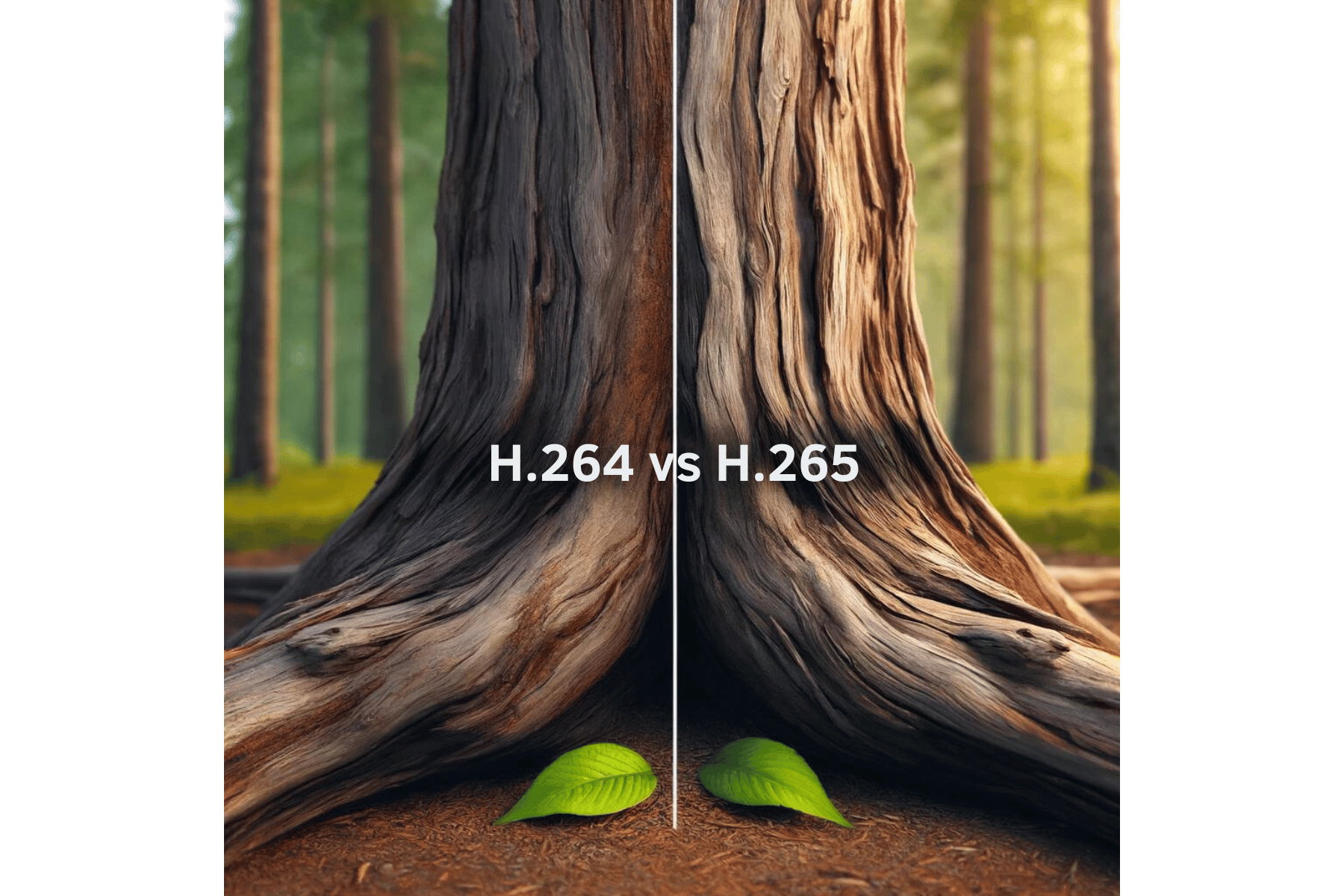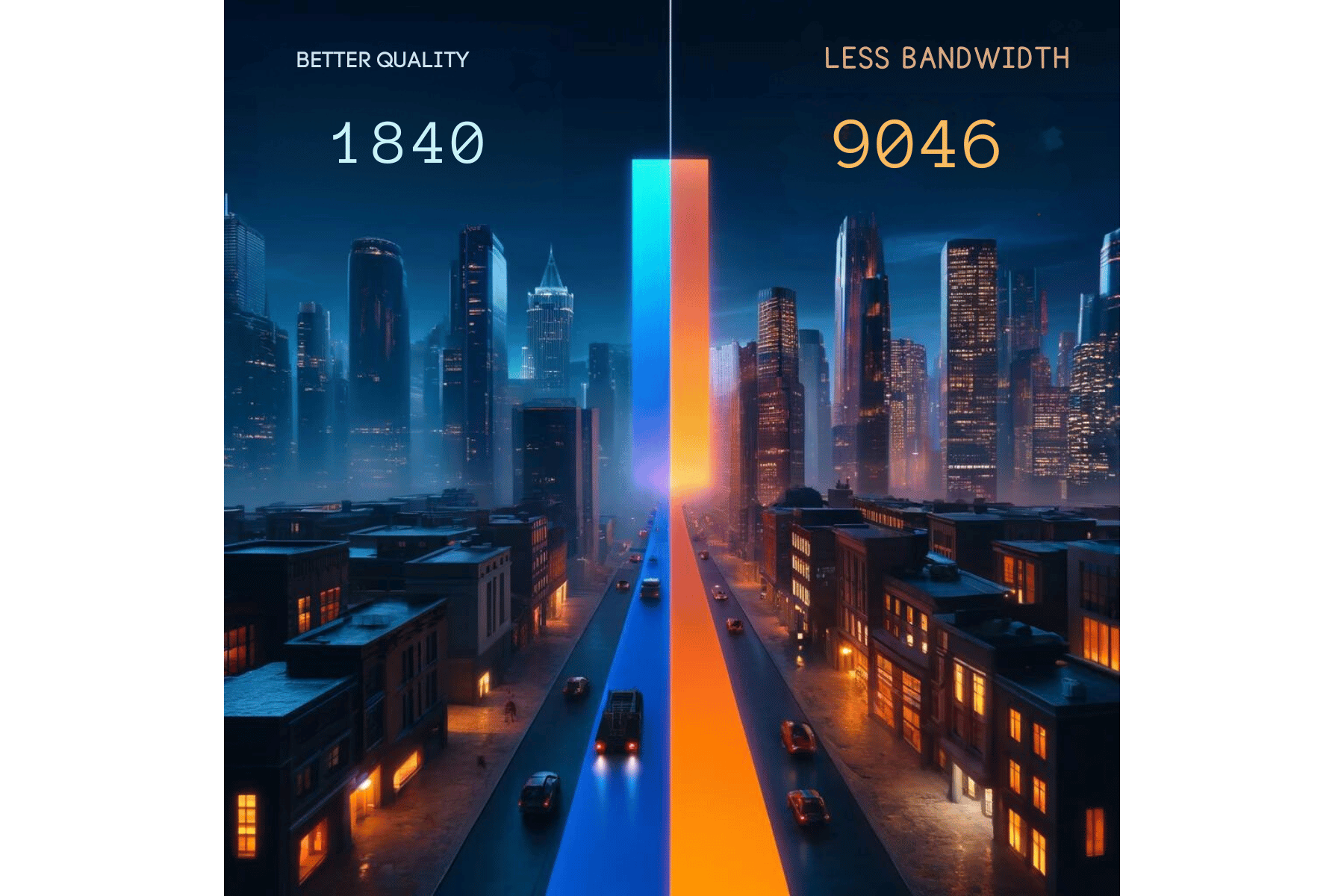Table of content
Introduction:
Gone are the days when 4K and even lower-quality videos are rare on any platform. Now, with the emergence of H.264 and H.265, things have taken a turn so far to bring you high-quality videos along with options for decompressing and compressing your content.
With the rapid fame of YouTube, Netflix, and all other video-sharing platforms like CP-8865-K9, people are switching towards H.264 and H.265. In this blog, we will go through an in-depth overview of both these terms. Additionally, we will take a look at H264 vs H265 to distinguish their features, uses, and benefits. Hence, keep reading this informative blog to grab what it holds for you.
Understanding H264 vs H265:

Both H264 and H265 are video coding stands respectively known as AVC (Advanced Video Coding) and HEVC (High Efficiency Video Coding). These standards are used for high-quality video streaming, conferencing, and broadcasting while delivering a considerably efficient and lower bitrate. It helps users, network administrators, media groups, and other video sharing companies spread their content without facing storage issues. At the same time, H264 and H265 provide users with a platform to watch, explore, and entertain at their dream resolution and lower bitrate without lowering the quality of video. Let’s discuss both of them separately.
What is H264?
H264, also referred to as Advanced Video Coding, is a video codec that strengthens and has been rocking the field video compression ever since its emergence. The contribution of H2645 is deniable and the comfort and experience it brought to the world of streaming, media, and entertainment is unforgettable.
Commonly known as MPEG-4 Part 10, H264 is a second-to-none video compression codec in the industry. Bringing network-friendly features, unparalleled benefits, and compression performance, it has become widespread adoption. Not only this, platforms like YouTube, Netflix, and Cable TV consider H264 a backbone for achieving their goals.
It performs all its activities inter-frame prediction, motion estimation, and entropy coding. It compresses the size of a video without lowering the quality and gives you the best streaming experience ever. Its versatility is not limited only to these technical aspects. Instead, H264 possesses high-quality video over diverse network conditions without significant energy costs. Such aspects make it suitable for mobile applications. In short, this video compression standard has revolutionized the world of streaming, broadcasting, and conferencing in association with CP-8851-K9.
What is H265?
Introducing a new era of boosted video compression, H265 or High-Efficiency Video Coding jumps into the scene and shows a red card to H264. This new video coding standard is aimed at optimizing streaming as well as storage of high-resolution video. It is designed and engineered keeping the future streaming and broadcasting standards in mind and hence it has the capability of delivering matchless quality videos at a bitrate that is half in comparison to H264.
With the emergence of H265, we encounter a significant advancement in video streaming as well as encoding standards. Also known as High-Efficiency Video Coding (HEVC), H265 is a highly nuanced codec that is best known for its superior features. Moreover, it offers double the data compression ratio of H264 and excellently maintains video quality while significantly reducing file sizes. Nowadays, it is used with CP-8832-K9 in most scenarios.
H264 vs H265: Features and Benefits:

In order to understand which one is better “H264 vs H265”, it is necessary to consider their features and benefits in a comprehensive way. It is crystal clear, that both the videos compressing coding standards are of immense significance when it comes to high-quality video and reduced file sizes. It is no longer a hidden side that these both vary in their performance. However, there are many other features and benefits you encounter when you put ‘H264 vs H265’ in small chunks:
Features and Benefits of H265:
- Enhanced Video Compression: It uses modern compression codecs to provide higher quality videos at the same bitrate, or maintain similar quality at reduced bitrates, outperforming H264.
- Improved Video Quality: Offers better motion compensation and spatial prediction, significantly enhancing video quality over its predecessor.
- 4K and 8K Content Support: Efficiently handles 4K and 8K UHD content, making it future-proof for upcoming media advancements.
- Future Media Streaming: Crafted specifically to elevate future media streaming with its exceptional efficiency and quality.
- Coding Flexibility: Increases coding flexibility, accommodating a wide range of video applications more efficiently than before.
- Parallel Processing: Supports advanced parallel processing capabilities, optimizing video encoding and decoding processes.
- Technological Advancement: Represents a significant technological leap forward, ensuring readiness for the next wave of media consumption demands.
Features and Benefits of H264:
- Superior Quality at Lower Bitrates: Ensures high-quality video output even at reduced bitrates, making it efficient for streaming.
- Versatile Platform Support: Exhibits remarkable flexibility, compatible across various platforms including broadcasting and the internet.
- High-Definition Streaming: Perfectly suited for high-definition video streaming, offering clear and detailed visuals.
- Social Entertainment Sector Appeal: Its efficiency and adaptability make it the preferred choice for many businesses in the social entertainment industry.
- Reliable Video Coding: Known for its reliability in delivering quality video content, maintaining its position as a dominant video codec.
- Widespread Adoption: Its widespread use across multiple platforms highlights its versatility and efficiency in video streaming.
- Established Track Record: Has a proven track record of performance and compatibility, trusted by professionals and businesses worldwide.
H264 vs H265: A Quick Comparison:
What is the average bandwidth required per resolution? Or what is the main difference ‘H264 vs H265’? Either way, your answer lies in the following table.
|
Resolution
|
H.264/AVC
Bandwidth required |
H.265/HEVC
Bandwidth required |
| 480p | 1.5 Mbps | 0.75 Mbps |
| 720p | 3 Mbps | 0.75 Mbps |
| 1080p | 6 Mbps | 3 Mbps |
| 4K | 32 Mbps | 15 Mbps |
H264 vs H265: Pros and Cons:
H.264 Pros:
- It Works with almost all video players, streaming services, and devices.
- Requires less processing power for encoding and decoding, making it suitable for older hardware.
- Provides good video quality at relatively low bitrates for Full HD content.
H.264 Cons:
- Compared to H.265, H.264 produces larger files for the same video quality.
- Not as efficient in compressing ultra-high-definition (4K) videos, leading to even larger files.
H.265 Pros:
- It provides up to 50% better data compression rate without degrading the video quality and reduces file size significantly.
- Engineered to be suitable at higher resolutions, making it ideal for 4K and 8K videos.
- Potentially offers better video quality at lower bitrates, especially in high-resolution videos.
H.265 Cons:
- It might not be supported by older hardware as encoding and decoding H.265 videos require more processing power.
- It can lead to compatibility problems with some devices and software because it is not as widely supported as H.264.
- It has more complex and potentially expensive licensing agreements due to patent issues.
Conclusion:
H264 and H265 both are at your fingertips when you are shifting towards high-quality video streaming, video decompression, or compression. These video compression codecs offer multiple ways to experience the best quality video content as well as to manage the space by compressing extra-large files into smaller ones. It is important to remember when you choose ‘H264 vs H265’ that these video compression standards never compromise on the quality of video, whether it is live streaming, conferencing, or TV shows. In addition, a number of video conferencing devices, such as CP-7861-K9 and CP-8811-K9 have proven to be successful with H264 and H265.
Frequently Asked Questions:
What is a video codec?
Video codecs are software tools that compress or decompress large video files without sacrificing the quality of the content. These codecs employ algorithms to compress video files reducing transmitting time and space.
‘H264 vs H265’ Which one is better?
It depends on your unique requirements. In case, you are dealing with high-resolution video formats (4K and 8K), H265 should be the first choice. On the other hand, if you have some older devices to deal with, you have to turn your head towards H264.
Is H264 highly compatible?
The simple answer is yes. AVC or H264 is widely used and compatible with almost all major streaming protocols and formats. That is the reason it stands out to be the best choice when people choose from ‘H264 vs H265.’
Does H265 reduce video quality?
No, it doesn’t compromise even when it compresses a 1GB video to 500 MB. H.2265 never compromises on the quality of video while providing you with a considerable amount of free space.
How to choose between H265 and H264?
To choose between these two video compression standards. Look at the above-mentioned quick comparison and determine your priorities and needs. That is how choosing ‘H264 and H265’ becomes easy for you.




 Catalog
Catalog













































































































